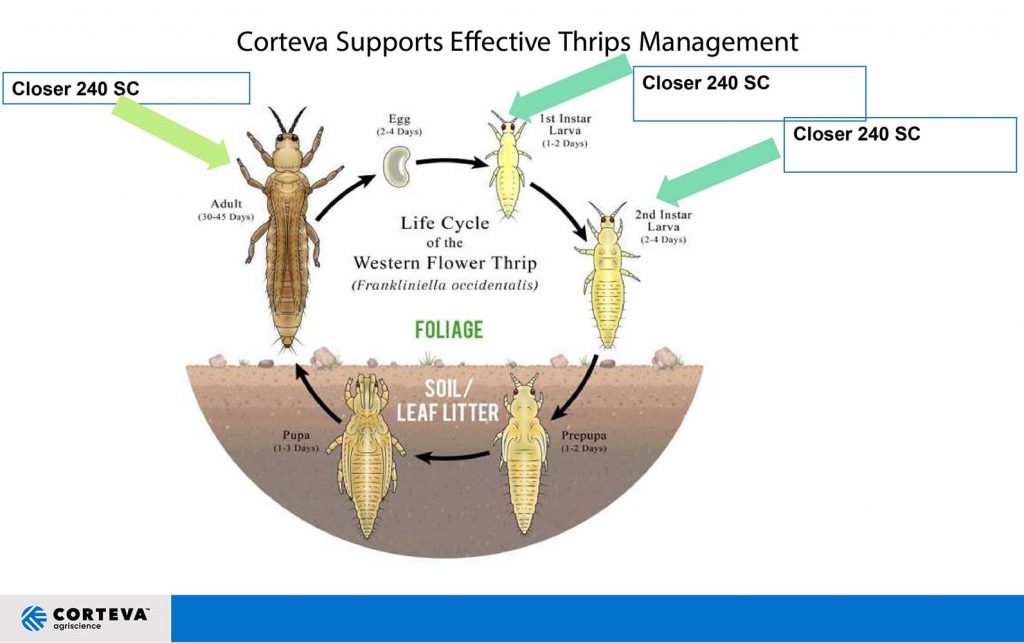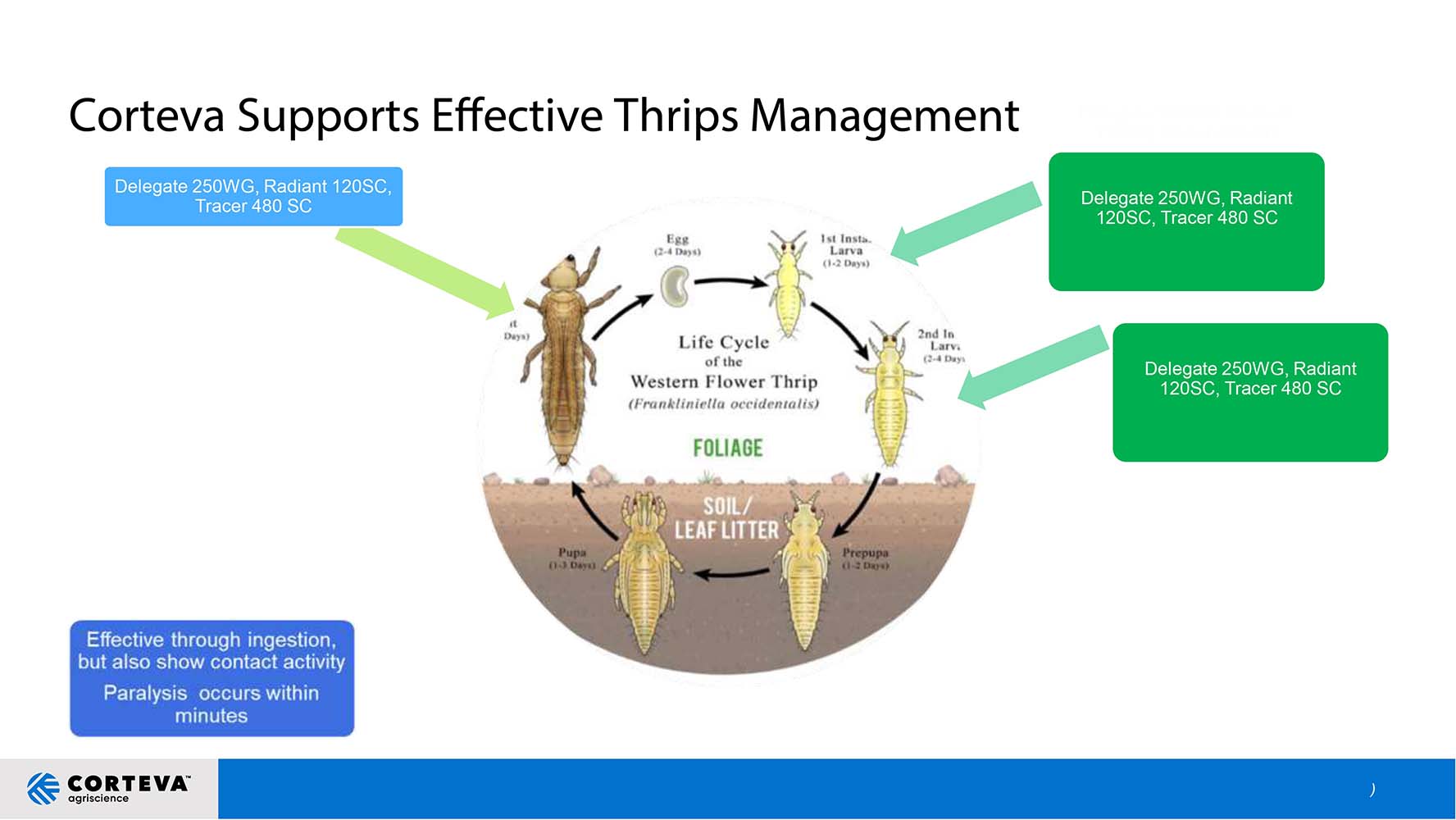Although Thrips may appear delicate due to their small size, they are significant threats within greenhouse environments. Growers face limited options regarding acceptable and effective solutions, especially given global regulatory trends and various market standards.
Thrips control products recommended by Corteva Agriscience are:
| PRODUCT TRADE NAME | TRANSLOCATION PATH WAYS | MODE OF ACTION | RATE OF APPLICATION |
| Tracer 480 SC | Translaminar | ingestion and contact | 200 mls/ ha |
| Delegate 250 WG | Translaminar | ingestion and contact | 150g/ ha |
| Radiant 120 SC | Translaminar | ingestion and contact | 300 mls/ha |
| Closer 240 SC | Systemic & Translaminar | ingestion and contact | 200 mls/ha |
Understanding Thrips
There are more than 8,000 species of thrips found globally, classified under the order Thysanoptera. These tiny insects measure only a few millimetres in length and have elongated, slender bodies, allowing them to access even tightly closed flower buds.
The most prominent pest species include Thrips tabaci, known as Onion thrips, and Frankliniella occidentalis, referred to as Western Flower Thrips (WFT).
Thrips are economically significant pests associated with high control costs and a decline in flower quality, affecting both petals and leaves. They lead to reduced profits due to diminished marketable harvest yields. Additionally, thrips damage makes plants more susceptible to opportunistic diseases such as Botrytis and can act as vectors for viral infections. They are internationally recognized as quarantine pests.



Controlling thrips is challenging.
If management is necessary, implement an integrated approach that merges effective cultural practices, natural predators, and the least harmful or most selective insecticides suitable for the situation.
Key characteristics of these insects include:
• They are very small and easily overlooked, measuring 2-3mm.
• Part of their lifecycle occurs in the soil or growing media.
• They conceal themselves in flowers, flower buds, and leaf buds, making them hard to spot and reach during spraying.
• They have a wide range of host plants.
• They feed on plant sap.
• They reproduce prolifically in greenhouse environments.
• They can be transported through plant materials.
• They are highly susceptible to developing resistance to chemicals.
Management
Cultural/ Physical control
To manage thrips through physical and cultural controls, growers should avoid and minimize open flowers in greenhouses or open fields and maintain clean fields through weeding. Practicing fallowing may also be beneficial in certain situations. Implementing exclusionary measures such as insect-proof netting, sticky and monitoring traps in blue, yellow, and white, as well as pheromones/lures/baits, can help. Windbreaks and planting trap crops, particularly around the perimeter of open fields, are also recommended.
Biological Control
Given the increasing resistance of thrips to insecticides, various natural enemies and microbials like BTs and EPFs are now being utilized as biological control measures.
Chemical Control

When it comes to chemical control, it’s essential to familiarize yourself with the biology of the specific thrips species before employing a synthetic insecticide, as this knowledge will enable you to create effective spray programs aligned with resistance management strategies. Growers should adhere to the product label guidelines, including spray intervals, application rates, and timings. To ensure optimal coverage, the use of spreaders should be considered where applicable. Finally, the stage of the insect’s lifecycle should be taken into account in relation to the choice of chemical solution.

If chemical insecticides are applied, integrating their use with appropriate cultural practices and other methods will enhance pest control efficacy.
